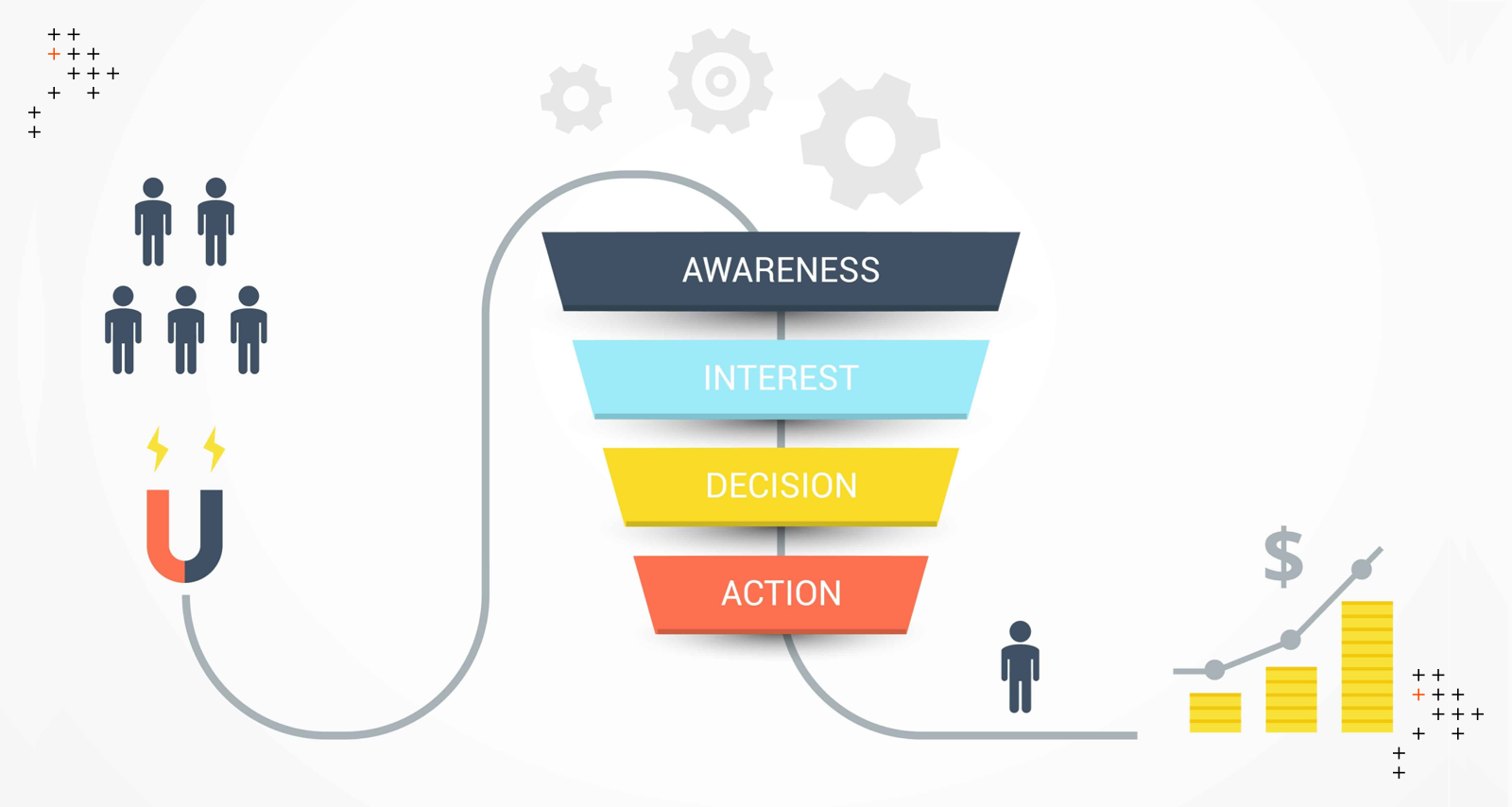Introduction
Higher education institutions are navigating a transformative era. Prospective students expect more than attractive pages and updated content—they seek clarity, confidence, and connection through every digital interaction.
Yet, many institutions still rely on fragmented experiences that look good but fail to guide users toward action. That’s where Axelerant steps in—not as implementers, but as strategic partners. We don’t just build websites; we help colleges and universities engineer conversion-driven ecosystems that support measurable growth, deeper engagement, and long-term impact.
Through data-informed UX, modular technology, and continuous optimization, we help institutions turn interest into inquiry, inquiry into intent, and intent into enrollment.
Why Conversion-Focused Strategies Matter in Higher Ed
A conversion-focused platform goes beyond just good looks and easy navigation. It’s thoughtfully designed to help prospective students move from “just looking” to “I’m ready to apply.” In higher education, every click, scroll, and moment matters—because each one can influence a student’s future and an institution’s success.
Axelerant's Strategic Approach
Our methodology revolves around four core pillars: Strategy, Design, Build, and Grow. Each pillar aligns closely with specific goals to ensure comprehensive digital transformation:
1. Strategy: Aligning Digital Initiatives with Clear Business Goals
For institutions like the University of East London (UEL), we clarified and mapped their vision to measurable business outcomes, significantly increasing student enrollments, enhancing accessibility, and streamlining content governance.
Our strategic planning ensures that every digital initiative:
- Directly supports key institutional objectives.
- Is guided by data insights that uncover patterns and opportunities institutions might otherwise miss
2. Design: Crafting Intuitive, Empathetic Experiences
We emphasize human-centric design practices, using detailed persona research, empathy mapping, and student journey mapping. By deeply understanding prospective students through user interviews, analytics, and feedback—we design intuitive digital experiences tailored to their unique motivations and concerns.
For example, mapping emotional journeys around critical touchpoints such as financial aid inquiries improved user clarity and significantly increased enrollment conversions for specific programs.
3. Build: Flexible, Scalable, and Future-Proof Platforms
We follow a modular and future-ready approach to platform development, ensuring that institutions are equipped to scale, adapt, and integrate with evolving technologies. Our process begins with defining the right architecture that supports open-source flexibility, performance, and long-term maintainability.
We leverage leading CMS platforms like Drupal and modern frontend frameworks such as Next.js to create responsive and accessible experiences. These platforms are then integrated with institutional systems, including CRMs (like Element451 and HubSpot), CDPs, and marketing automation tools. This integration ensures that user data flows smoothly across systems, enabling personalized and automated communication at each stage of the student journey.
Accessibility is embedded throughout the build phase. By applying an accessibility-first mindset and conducting regular audits, we ensure compliance with WCAG 2.2 AA standards, enhancing usability and inclusivity for all users, regardless of device or ability.
4. Grow: Continuous Optimization and Real-Time Insights
Growth doesn’t stop at launch—it’s a continuous process. We use tools like GA4, VWO, Optimizely, and AB Tasty to track how users interact with your site. With heatmaps, A/B tests, and session recordings, we see what’s working and where users drop off. Then, using VWO’s AI-powered insights, we quickly test and implement improvements—like clearer calls to action, better form layouts, or stronger headlines—that can make a big difference in conversion rates.
UEL: A Data-Driven Success Story
One example of our conversion-focused strategy in action is our work with the University of East London (UEL). The University of East London, founded in 1898, is ranked in the world’s top 250 young universities. The university’s vision is to advance knowledge and drive innovation for positive change.
UEL’s website provides information on courses, admissions, careers, and research opportunities. Faced with challenges around accessibility, engagement, and content governance, UEL partnered with Axelerant to reimagine their digital platform.
We adopted a full-funnel approach—rebuilding their CMS on Drupal, improving accessibility compliance, and implementing a scalable architecture to support future enhancements. We introduced funnel tracking and user behavior analysis to identify key drop-off points, and integrated personalization strategies to tailor user experiences.
This resulted in:
- 32% increase in enrollments
- 73% increase in overall applications
- 30% increase in relevant traffic
- 3x faster content publishing through a centralized editorial workflow
- Increased accessibility scores with WCAG 2.1 AA compliance
This data-driven transformation set a strong precedent for how higher education institutions can effectively use conversion optimization strategies to meet both student and institutional goals.
A Real-World Use Case: Solving for Complexity and Engagement
Recently, a large North American community college approached us with challenges that are common across the higher education sector: fragmented digital experiences, declining engagement, and low conversion rates despite significant website traffic. Their leadership team had clear goals:
- Increase enrollment and streamline the application process
- Deliver a unified digital experience across all student-facing systems
- Implement personalization and automation using CRM and AI tools
- Simplify content for diverse personas, including adult learners, first-time students, and faculty.
We responded with a multi-tiered solution that balanced strategic vision with practical implementation:
Our proposed platform emphasized:
- A seamless, personalized user experience for prospective and current students
- A future-proof architecture using Drupal 11 and Element451 CRM
- Support for accessibility, scalability, and cross-device responsiveness
Conversion Strategy with VWO and Continuous Optimization
To support the institution's goals of improving enrollment outcomes and increasing engagement, we knew the solution needed to go beyond tech features or surface-level fixes. So instead of leading with tools, we led with behavior-driven insights.
We proposed a structured, pragmatic approach to conversion optimization using VWO—not as a silver bullet, but as a way to better understand student behavior in real time. Our focus was on learning continuously: observing where students hesitate, testing what helps them move forward, and refining every step of the journey.
Because when you view your digital platform as a living, learning system—not a static website—you start designing for real outcomes, not assumptions.

Our Proposed Step-by-Step Conversion Framework
- Define the Funnel Goals: We recommended clarifying what “conversion” means for the institution, whether it’s event registration, form submission, program interest, or specific engagement behaviors.

- Begin with Data Collection: We emphasized capturing behavioral insights early. Even if advanced personalization is a future goal, establishing foundational tracking through GA4 and VWO helps build a baseline. This includes heatmaps, scroll depth, click maps, and session recordings.
- Formulate Hypotheses: We recommended working closely with the institution’s team to define clear, testable hypotheses based on early observations and team insights. For example: “First-time visitors may convert better if presented with beginner-friendly messaging and inclusive imagery on event pages.”
- Map and Deconstruct the Journey: Instead of focusing only on immediate page-level changes, we proposed mapping the entire student journey from discovery to enrollment. This included identifying key decision stages and likely drop-off points to guide experiment design.
- Design Experiments: Using VWO’s low-code interface, we could test variations such as CTA placement, banner messaging, or form field adjustments without requiring complete dev cycles. These experiments could be aligned with key enrollment cycles or events to measure real-time impact.
- Introduce Broad Personalization: We suggested beginning with broad audience segmentation based on referral source, geo-location, or campaign UTM parameters. For instance, tailoring event messages for users via email campaigns or from specific states.
- Integration Readiness: While the institution is in the early stages of Element 451 CRM, we recommended structuring available data from HubSpot and GA4 for future personalization use cases. VWO's integration with these systems allows for a unified tracking and experimentation engine when the time is right.
- Plan in Iterative Waves: Rather than a single rollout, we proposed a scalable roadmap. For example, using an upcoming program launch or seasonal campaign as a pilot use case. This helps validate the approach, build internal confidence, and gradually scale across departments or sites.
- Involve Stakeholders in Prioritization: We recommended working closely with marketing and enrollment teams to co-create and rank hypotheses based on impact and feasibility. This ensures buy-in and helps connect experimentation to institutional priorities.
Unlocking VWO’s Capabilities: AI-Driven Optimization for Higher Ed
As part of our proposed approach, we recommend leveraging the full potential of VWO’s evolving toolset, especially its AI-powered features, to drive data-informed decision-making and scalable experimentation.
VWO offers an integrated suite that includes:
- Heatmaps & Session Recordings: To visualize real user interactions and identify friction points.
- A/B and Multivariate Testing: Enabling low-code experiments to test headlines, forms, layouts, and CTAs.
- Personalization Engine: Tailoring content dynamically for different audience segments or campaign journeys.
- Behavioral Analytics: Capturing click paths, scroll depth, and user actions to inform design and content improvements.
- AI-Powered Recommendations: VWO’s latest feature allows institutions to receive personalized optimization ideas powered by machine learning. These ideas are based on website goals, industry benchmarks, and historical user behavior patterns.
We proposed using these AI capabilities to generate variation suggestions automatically and accelerate the experimentation process. For institutions with lean teams, this reduces the effort required to brainstorm A/B test ideas manually, helping prioritize high-impact changes quickly.
Combined with insights from GA4, Element451, and HubSpot, VWO’s platform could serve as a central hub for continuous CRO strategy, fueling smarter decisions, faster iterations, and, ultimately, better enrollment outcomes.
From Strategy to Impact: What Comes Next for Higher Ed
Conversion isn’t a one-time metric, it’s a long-term commitment to optimizing every stage of the student journey. At Axelerant, our work with institutions like UEL and others has shown how a thoughtful mix of strategy, personalization, CRO, and design can create platforms that truly perform.
Whether you're rebuilding your platform from the ground up or refining existing digital touchpoints, the path forward is clear: understand your users, optimize continuously, and make every interaction count.
The experts at Axelerant can help implement similar solutions and more for your university. Schedule a call to know more.

Prateek Jain, Director, Digital Experience Services
Offline, if he's not spending time with his daughter he's either on the field playing cricket or in a chair with a good book.
%20copy.png)
Sayan Mallick, Marketing Assistant
A former professional e-sports player, passionate about anime and technology—that’s Sayan. He is an eccentric explorer who likes to read, play games, teach, and spend time with his pet dog, Buddy.

 We respect your privacy. Your information is safe.
We respect your privacy. Your information is safe.



Leave us a comment